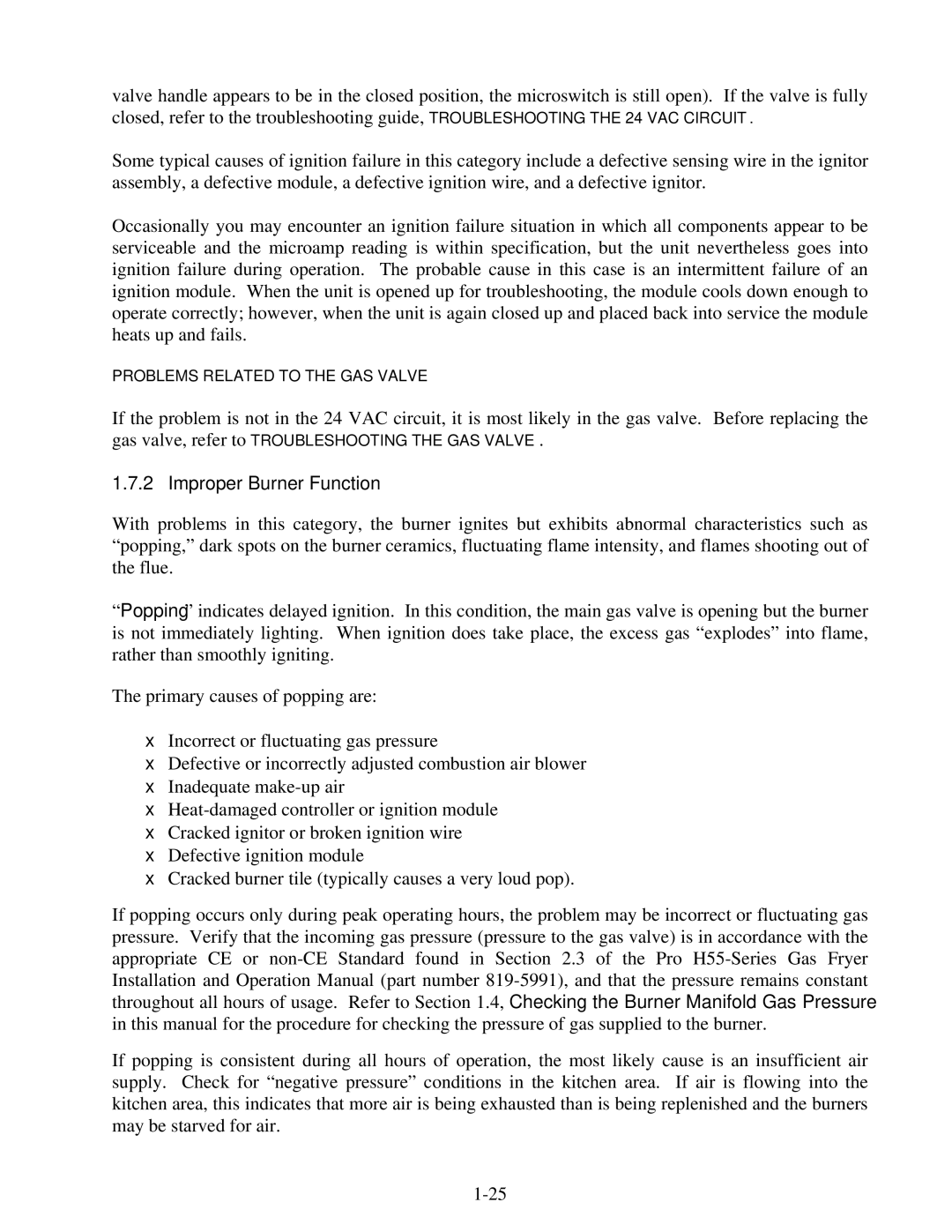H50 specifications
The Frymaster H50 is a state-of-the-art commercial deep fryer designed for efficiency and reliability in fast-paced kitchen environments. Known for its advanced technology and user-friendly features, the H50 is an ideal solution for restaurants, cafeterias, and food service operations looking to enhance their frying capabilities.One of the standout features of the Frymaster H50 is its innovative oil management system. This system helps maintain optimal oil quality and reduces the frequency of oil replacement, which not only saves costs but also contributes to improved food flavor. The unit is equipped with a built-in filtration system that can clean the oil while the fryer is in use, significantly extending the life of the frying oil and ensuring consistent frying results.
The Frymaster H50 is also designed with advanced temperature control technology. This ensures precise temperature settings, allowing operators to achieve the perfect fry every time. The fryer features a digital control panel that makes it easy to set and monitor frying temperatures, giving chefs the flexibility to prepare a wide variety of fried foods, from crispy french fries to delicate fish fillets.
In terms of performance, the Frymaster H50 boasts a high production capacity, making it capable of handling large volumes of food. This is especially beneficial during peak service hours when demand is at its highest. The fryer can heat up quickly, providing rapid recovery times that keep up with busy kitchen demands.
Durability and ease of maintenance are also key characteristics of the Frymaster H50. Constructed with high-quality materials, this fryer is built to withstand the rigors of heavy usage in commercial settings. The removable fry pots offer easy access for cleaning and maintenance, ensuring that the fryer stays in optimal working condition with minimal downtime.
Another important aspect of the Frymaster H50 is its energy efficiency. The fryer is designed to consume less energy while still delivering superior frying results, which is an essential factor for businesses looking to reduce their operational costs.
Overall, the Frymaster H50 combines innovative technology with user-friendly features to deliver a high-performing commercial frying solution. Its advanced oil management system, precise temperature control, and durable construction make it an excellent choice for any food service operation looking to elevate their frying capabilities.
